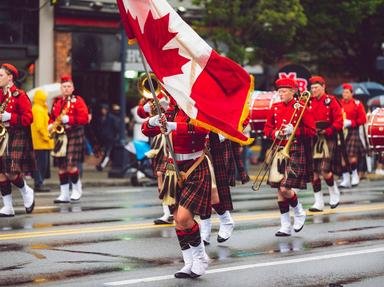Quiz Answer Key and Fun Facts
1. This Canadian hero was a World War I flying ace. His first name was William, but that's not what Canadians know him as.
2. When Canadians were asked by the CBC to name the Greatest Canadian, this "little fellow with the big idea" topped the long, long list. His grandson is better known internationally, but the Greatest Canadian is an icon in Canada. Who is it?
3. This young Canadian, who lost a leg to cancer while still in his teens, also showed up in the Top Ten on the CBC poll.
4. Since part of Canada lies within the Arctic Circle, it makes sense that one of our heroes is an Arctic explorer.
5. This Canadian grew up with wealth and privilege. He wrote several books on spiritual themes, but he is mainly known for his work with mentally challenged adults. After his death in 2019, it emerged that he had abused 25 different women.
6. This woman was the first female member of the House of Commons in Canada, and also the first woman to be sworn in as a Member of the Ontario Provincial Parliament.
7. How old was Canadian activist Craig Kielburger when he began speaking out in defence of children's rights?
8. He was the most decorated aboriginal soldier in the Canadian army, and after he was invalided out of the forces, he took up the cause of aboriginal rights.
9. This woman, with four colleagues, was instrumental in having women recognized as persons under Canadian law.
10. This Canadian hero is the only westerner to have statues raised in his honour throughout Communist China.
Source: Author
Cymruambyth
This quiz was reviewed by FunTrivia editor
bloomsby before going online.
Any errors found in FunTrivia content are routinely corrected through our feedback system.

